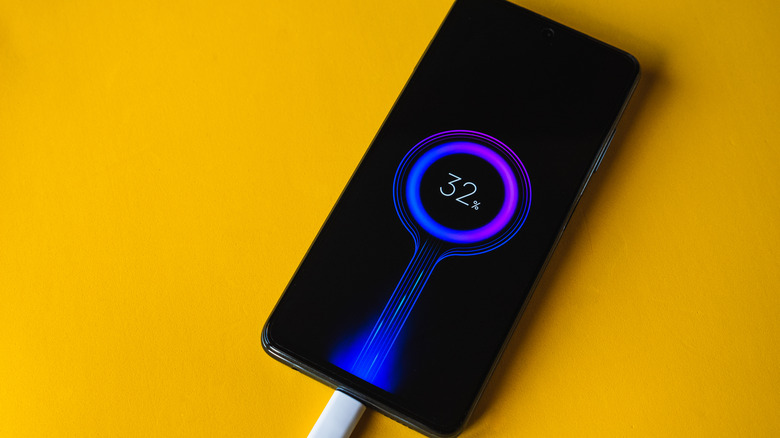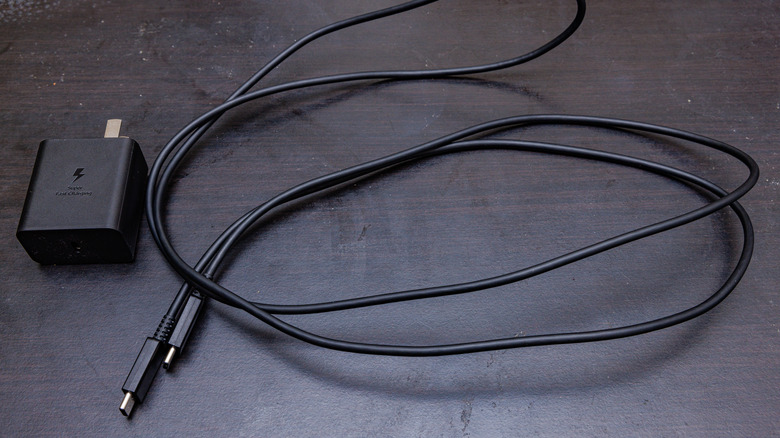How To Pick The Fastest Charger For Your Phone
As much as it's become the default in the last several years, fast-charging technology is still fairly new, only having been around for about a decade all told. Earlier, while some phones would've achieved a full charge in the same amount of time that a current flagship handset might today, getting a dead battery to a decently usable state — like 50% — took a lot longer. And once fast charging started to take hold in 2013, there were multiple competing standards, with the dominant Qualcomm Quick Charge being joined by opposition from Oppo/OnePlus (VOOC Flash Charge), Huawei (SuperCharge), and MediaTek (PumpExpress+).
Eventually, though, the USB Implementers Forum (more commonly known as USB-IF) advanced USB Power Delivery (or USB-PD) standards to the point where it made the most sense to just use the more open standard instead of battling it out. It wasn't just that, though: Google pushed OEMs to favor USB-PD over Quick Charge starting with Android 7.0 in 2016, saying that "[USB] Type-C devices are STRONGLY RECOMMENDED to not support proprietary charging methods."
The current normal is that Android phones and tablets, many new laptops including MacBooks, and, by the end of 2024, even iPhones will all be using the same charging standard. This means that there are a lot of USB Type-C chargers on the market. With that in mind, how exactly do you pick the right charger for your phone that will fill up the battery in the quickest and safest way possible?
Sorting through the chargers
The process of finding the right charger — it doesn't help how many phones don't even include chargers in the box anymore — is made more difficult by the fact that there's still room for hype even as companies embrace the USB-PD standard. Samsung, for example, touts tiers of charging that include "Fast Charging" and "Super Fast Charging" without clearly explaining the difference between the two. In reality, the Korean electronics manufacturer is working off of USB-PD, with "Super Fast Charging" essentially being a promise of peaking at 25W or higher.
Generally speaking, though, it comes down to reading your phone's manual or spec sheet, seeing what standard and maximum charging wattage it supports, and getting a charger that fits those specifications. Going by the Samsung Galaxy S23 series as an example based on the official charging guide, you need a USB Type-C charger with at least 25W capacity and a 5A cable to achieve fast charging, with up to 45W being possible on all S23s other than the base model.
Depending on what other devices you may have lying around the house, it's possible that you already have such a charger in the form of one intended for a laptop. It's always best to have a dedicated charger for each device, but in a pinch, using something like your MacBook charger should work just fine.
Other than that, it's just a matter of checking reviews from trusted sources to find which brands make the most reliable chargers that fit the above specifications, whether it's the same OEM as your handset or an accessory company like Anker. And that's about it. The days of being warned to avoid mixing and matching chargers across different brands and devices are pretty much over.
[Featured image by Dinkun Chen via Wikimedia Commons | Cropped | CC BY-SA 4.0]

